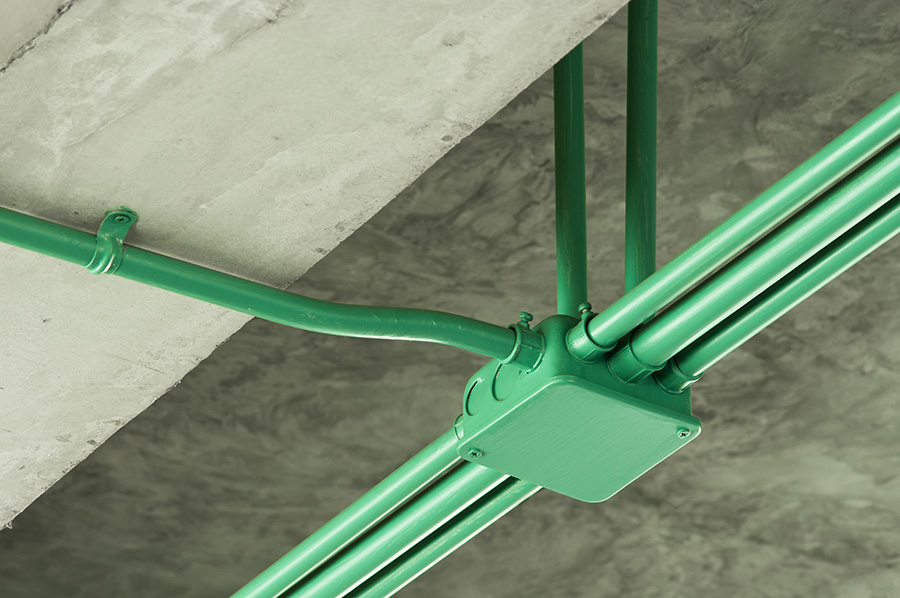April 13, 2022

Extending concrete service life takes a multi-faceted approach, but the underlying principles are always the same: (1) properly understand the conditions and environment, (2) select the appropriate treatment, and (3) apply the chosen solution properly for best results. Many outstanding options exist in Cortec’s line of MCI® Technologies, but not all treatments are equally suited to every application. It is therefore important to know when and why to choose a product such as MCI®-2026 Floor Coating for concrete longevity.
Choosing the Right Product for the Application
The first step in selecting a product to extend service life is considering the structure and its environment. For example, an engineer planning a new parking ramp in a harsh winter environment where deicing salts are used could extend service life by specifying Migrating Corrosion Inhibitor™ admixtures for the concrete mix. Workers performing concrete repairs can help the repair last longer by incorporating MCI® Mini Grenades into repair mortars. Facility managers can ward off corrosion on existing structures through periodic application of surface applied corrosion inhibitors (SACIs) such as MCI®-2020. While these products could also be used for concrete floors, often the biggest concern in an industrial environment is the risk of external concrete damage from heavy traffic and exposure to harsh chemicals. It is chiefly after this kind of damage that corrosion is more likely to occur by allowing corrosives to enter the substrate. MCI®-2026 Floor Coating is an excellent first line of defense against these problems.
Benefits of MCI®-2026 Floor Coating
There are three main areas where MCI®-2026 Floor Coating is especially helpful:
- Applications with strict VOC limits
- Federally inspected plants
- Areas with heavy traffic and/or chemical spillage
MCI®-2026 Floor Coating addresses the first concern by being a 100% solids, two-component novolac epoxy coating with zero VOCs. This is perfect for maintaining VOC compliance and is a great advantage for workers applying the coating. In the second case, MCI®-2026 meets all USDA/FDA guidelines for use in federally inspected facilities. In regard to the third case, MCI®-2026 Floor Coating achieves a high degree of physical and chemical resistance while maintaining excellent adhesion to properly placed primers. In so doing, it protects concrete surfaces from aggressive industrial environments and prevents the intrusion of corrosive elements that would cause further concrete deterioration at the reinforcement level. MCI®-2026 Floor Coating can be used alone as a body/basecoat or as a topcoat if additional internal moisture resistance is needed by priming the floor below.
Best Practices for Good Concrete Coatings Performance
Next in importance to choosing an appropriate technology is applying it properly. As for any coating, good surface preparation is critical to ensuring the best performance possible. Before applying MCI®-2026 Floor Coating, workers should make sure that the concrete floor is clean and sound with a minimum surface profile of CSP-2. Existing coatings should be removed to ensure proper adhesion. As a two-component product (a feature that allows crosslinking for an overall stronger coating chemistry), MCI®-2026 Floor Coating should be properly mixed and applied at the right temperatures per manufacturer’s instructions to work as designed.
Choosing Physical and Chemical Durability for Concrete Floors
By choosing to apply MCI®-2026 Floor Coating, facility owners and managers are left with concrete floors with a high degree of physical and chemical resistance. These qualities make the floor more durable and help it last longer primarily by protecting against physical and chemical damage and secondarily by blocking the intrusion of corrosives in an aggressive environment. All this is achieved with a low VOC coating that can be used in federally inspected facilities. Contact Cortec® to see if MCI®-2026 Floor Coating is the right choice for your industrial concrete floor application: https://www.cortecmci.com/contact-us/.
Keywords: Cortec, From Grey to Green, MCI, extend service life, concrete deterioration, concrete damage, low VOC coatings, concrete longevity, concrete coatings, concrete floor durability
Need a High-Resolution Photo? Visit: www.cortecadvertising.com
For a PDF version please click here.



You must be logged in to post a comment.